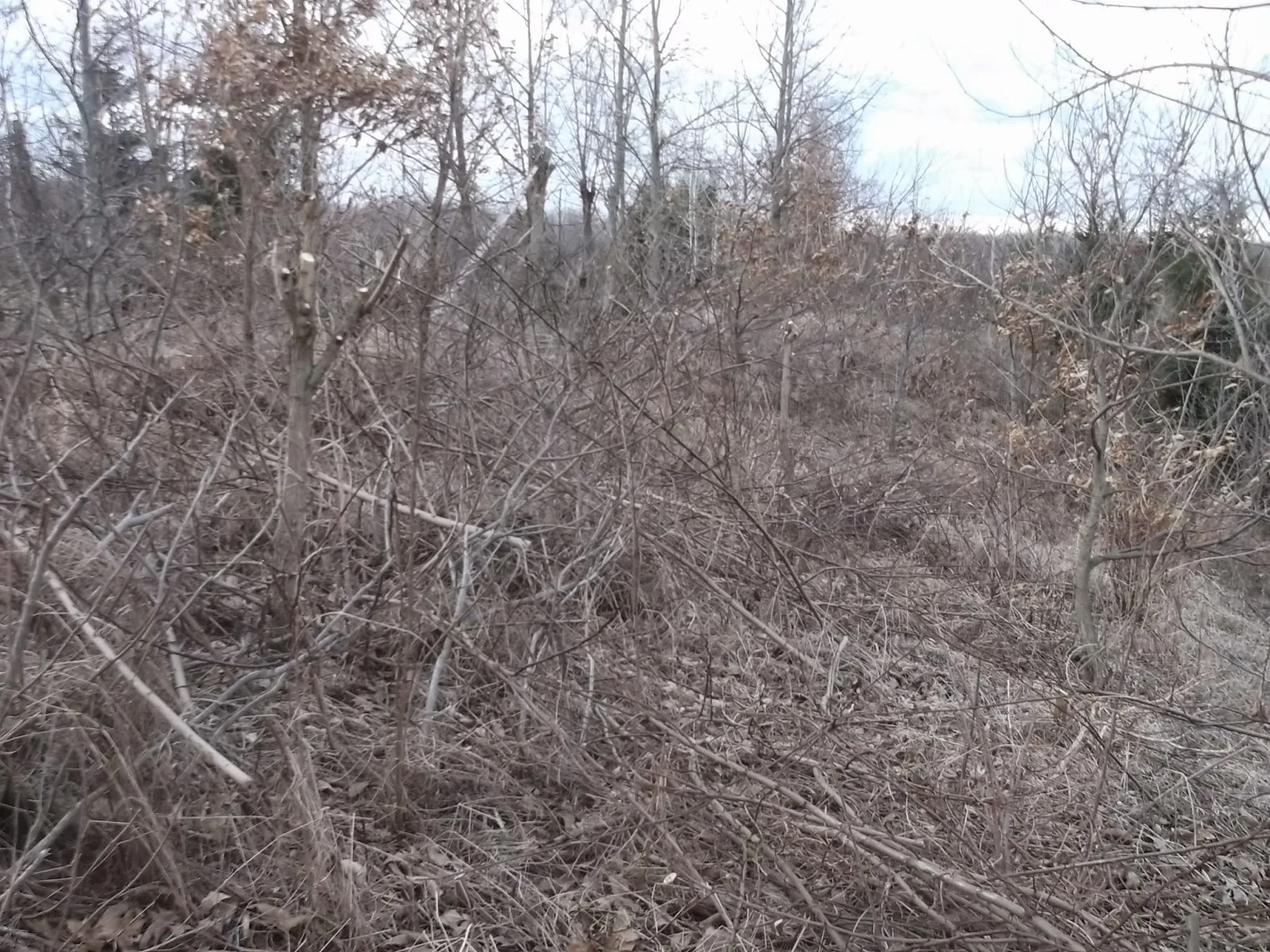It is going to be tough walking around out there until I get the trails cleaned up.
 |
| Trail runs through the center of most of these pictures. |
Early on I decided that I wanted to manage some of my trees as "pollard". Both pollard and coppice are regenerative techniques that "recycle" the root system. Coppice is cut flush, or nearly flush, to the ground. Pollard is the same as coppice but atop a trunk. The advantage of pollard is that the new growth is out of the reach of hungry herbivores.
Not all tree species coppice or pollard well. Those that do are often ones that evolved in a "fire ecology" and their survival depended upon rapid resprouting. Others evolved in flood plains where flood-borne trash would scour the above-ground portions of woody shrubs and trees away thus favoring trees that could resprout freely from the roots.
My first iteration of pollard has 12' trunks in the hopes of getting some fence posts or sawlogs out of the venture. The second generation has 5'-to-6' trunks to make lopping the limbs ergonomically friendly. Working from a ladder is awkward, risky and slow.
 |
| This pollard will look like a palm tree by mid-summer. |
 |
| This Black Locust was culled due to being excessively thorny. The cuts at 1, 4 and 9 O'clock were filled with herbicide solution to discourage resprouting. |
 |
| A quarter added to close-up for sense of scale. Black Locust is notable for its rot-resistant heartwood and for the very high ratio of heartwood-to-sap wood. |







Comment from Lucky via email:
ReplyDeleteJoe,
Noticed something on today’s blog post…
I’m certainly not an expert on the matter, but was under the impression that the desired and most effective application point for herbicides on freshly cut stumps is…around the perimeter, applying directly onto the cambium layer, to effect translocation down to the root system. My understanding is that the heartwood is essentially ‘dead’, and not involved in herbicide translocation.
I think your chainsaw divots into the heartwood at 1,4,9 o’clock won’t deter sprouting, even if filled with an appropriate herbicide.
Yes, Lucky, I think you are right.
DeleteI just did not have a very big target as far as hitting sapwood or the cambium (the living, dividing cells between the bark and sapwood).
For what it is worth, I wetted out the entire surface of the stump when I filled the little reservoirs. "You pays your money and you takes your chances."